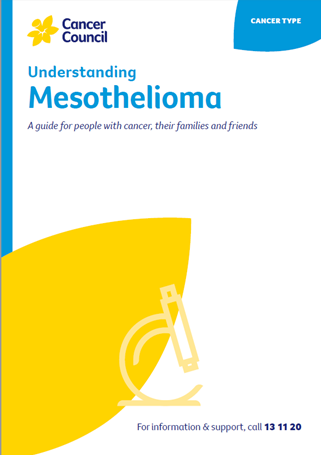Pleural mesothelioma
If you’re affected by pleural mesothelioma, you may have many questions about how it is diagnosed, treatment options and side effects. You can find trustworthy information about all aspects of your experience below.

Download PDF
Diagnosis
- What type of mesothelioma do I have?
- Has the mesothelioma spread? How fast is it growing?
- Are the latest tests and treatments for mesothelioma available in this hospital? Will a multidisciplinary team be involved in my care?
- Are there clinical guidelines for this type of cancer?
Treatment
- What treatment do you recommend? What is the aim of the treatment?
- Are there other treatment choices for me? If not, why not?
- If I don’t have the treatment, what should I expect?
- How long do I have to make a decision?
- I’m thinking of getting a second opinion. Can you recommend anyone?
- How long will treatment take? Will I have to stay in hospital?
- Are there any out-of-pocket expenses not covered by Medicare or my private health cover? Can the cost be reduced if I can’t afford it?
- How will we know if the treatment is working?
- Are there any clinical trials or research studies I could join?
Side effects
- What are the risks and possible side effects of each treatment?
- Will I have a lot of pain? What will be done about this?
- Can I work, drive and do my normal activities while having treatment?
- Will the treatment affect my sex life and fertility?
- Are there any complementary therapies that might help me?
Support
- Who can I call if I’m worried between my appointments?
- Will others in my family also be at risk of mesothelioma?
- Can I claim compensation for the illness? Who do I contact about this?
Need to talk?
Call 13 11 20 to talk to a health professional Or email us your questions.